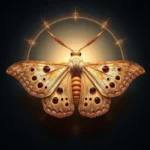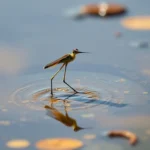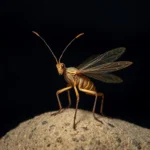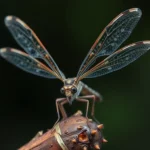The Enigmatic Deathwatch Beetle: Symbolism and Spiritual Insights
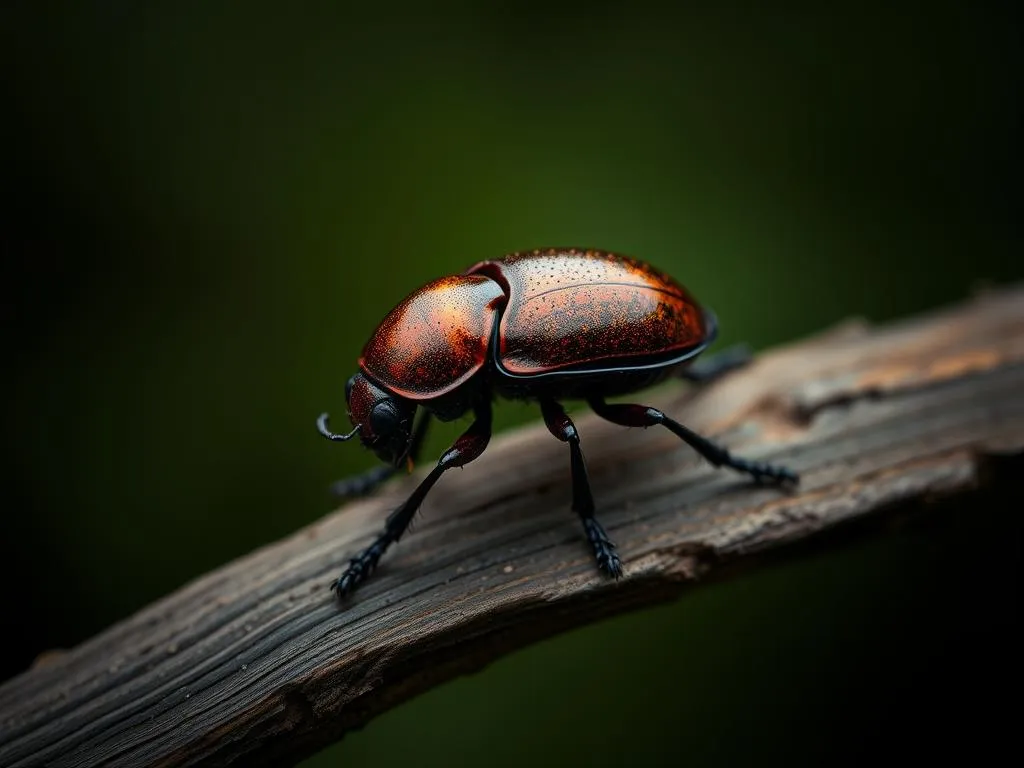
Disclaimer: Some images on this website are AI-generated artworks and may not accurately represent real animals.
The deathwatch beetle has long captivated the imagination of many cultures, serving as both a subject of fascination and a symbol steeped in mystery. Its unique characteristics and behaviors contribute to its rich symbolism, often linked to themes of life, death, and transformation. In this blog post, we will explore the intriguing world of the deathwatch beetle, delving into its physical attributes, lifecycle, and the profound meanings attributed to it across various contexts.
Understanding the Deathwatch Beetle
Physical Characteristics
The deathwatch beetle, scientifically known as Xestobium rufovillosum, is a small wood-boring insect found predominantly in Europe and North America. Its distinct appearance and behaviors make it a subject of intrigue.
| Characteristic | Description |
|---|---|
| Size | Approximately 5 to 8 mm long |
| Color | Dark brown or black with a velvety texture |
| Antennae | Long and slender |
| Habitat | Prefers damp, decaying wood |
| Behavior | Known for its tapping sound |
The beetle’s habitat typically includes old timber, wooden furniture, and buildings, where it thrives on decaying wood. Its ability to inhabit such environments underscores its role in the ecosystem as a decomposer.
Lifecycle and Behavior
The lifecycle of the deathwatch beetle is a fascinating journey that begins when a female lays her eggs in cracks of decaying wood. Upon hatching, the larvae burrow into the wood, consuming it as they grow. This process can take several years before they emerge as adults.
Mating rituals are equally compelling. Male beetles produce a characteristic tapping sound by striking their heads against the wood. This behavior has led to various interpretations and superstitions, particularly regarding its association with impending death.

Symbolism & Spiritual Meaning
Life and Death
The deathwatch beetle serves as a potent symbol of the cycle of life and death. Its presence often signifies the inevitable end of life, making it a poignant reminder of mortality. The beetle’s lifecycle, from larva to adult, mirrors the human experience of growth and eventual decline. Its connection to decay also highlights the beauty of transformation, suggesting that death is not an end but rather a transformation into something new.
Transformation and Renewal
In many cultures, the deathwatch beetle represents transformation and renewal. The act of decaying wood serving as nourishment for new life emphasizes the belief that endings pave the way for new beginnings. This cyclical nature of existence encourages individuals to embrace change and view it as a necessary part of life.
Omens and Superstitions
Historically, the sound made by male deathwatch beetles has been interpreted as an omen. Many believed that the tapping sound signaled the approach of death, especially when heard in proximity to a sick person. This superstition reflects the deep-rooted fears and beliefs surrounding mortality and the unknown. The beetle’s associations with death have permeated folklore, making it a subject of both fear and reverence.
Deathwatch Beetle in Dreams
Interpreting Dreams
Dreams featuring the deathwatch beetle can be profound, often delving into the subconscious mind’s reflections on mortality and transformation. Such dreams may invoke feelings of anxiety or contemplation about one’s life journey. The beetle can symbolize an aspect of the dreamer’s life that is undergoing change or decay, urging them to confront their fears or embrace transition.
Common Themes
Dreams involving the deathwatch beetle often encapsulate a variety of themes, including:
| Theme | Description |
|---|---|
| Mortality | Reflection on one’s own life and the inevitability of death |
| Transformation | The need for change or personal growth |
| Fear of the Unknown | Anxiety surrounding change or loss |
| Renewal | The possibility of new beginnings following endings |
These themes provide valuable insights into the dreamer’s psyche, encouraging introspection and personal growth.
Modern Interpretations
Cultural References
The deathwatch beetle has made its mark on literature, art, and folklore. Its presence in Edgar Allan Poe’s works, for instance, symbolizes the omnipresence of death and decay. In folklore, the beetle is often depicted as a harbinger of bad news, reinforcing its association with mortality.
Psychological Perspectives
From a psychological standpoint, modern interpretations of the deathwatch beetle emphasize its role as a metaphor for the subconscious mind’s grappling with mortality. Psychologists suggest that encounters with this beetle in dreams or waking life may prompt individuals to confront their fears and anxieties. Its symbolism encourages a deeper understanding of life’s transient nature.
Environmental Considerations
The deathwatch beetle plays a crucial role in ecological systems, aiding in the decomposition of wood. This function not only supports new growth but also symbolizes the importance of environmental change. As we confront climate change and habitat loss, the beetle’s existence serves as a reminder of nature’s resilience and the interconnectedness of life forms.
Key Takeaways
- The deathwatch beetle symbolizes the cycle of life and death, reminding us of our mortality.
- It represents transformation and renewal, emphasizing the beauty of change in our lives.
- Historical beliefs surrounding the beetle’s sound reflect deep-seated fears and cultural superstitions about death.
- Dreams featuring the beetle often explore themes of mortality, transformation, and the subconscious mind.
- Cultural references highlight the beetle’s prominent role in literature and art, reinforcing its symbolic significance.
- The beetle’s ecological role underscores the importance of environmental change and resilience.
Conclusion
In conclusion, the deathwatch beetle is a multifaceted symbol that encompasses themes of life, death, transformation, and renewal. Its unique characteristics and behaviors contribute to a rich tapestry of meanings that resonate with many individuals. As we reflect on the significance of this enigmatic beetle, we are encouraged to embrace the cycles of life and consider what it symbolizes in our own experiences.
The deathwatch beetle invites us to engage in dialogue about mortality, change, and the interconnectedness of all living things. By reflecting on its symbolism, we can gain deeper insights into our own lives and the transformations we encounter along the way.

